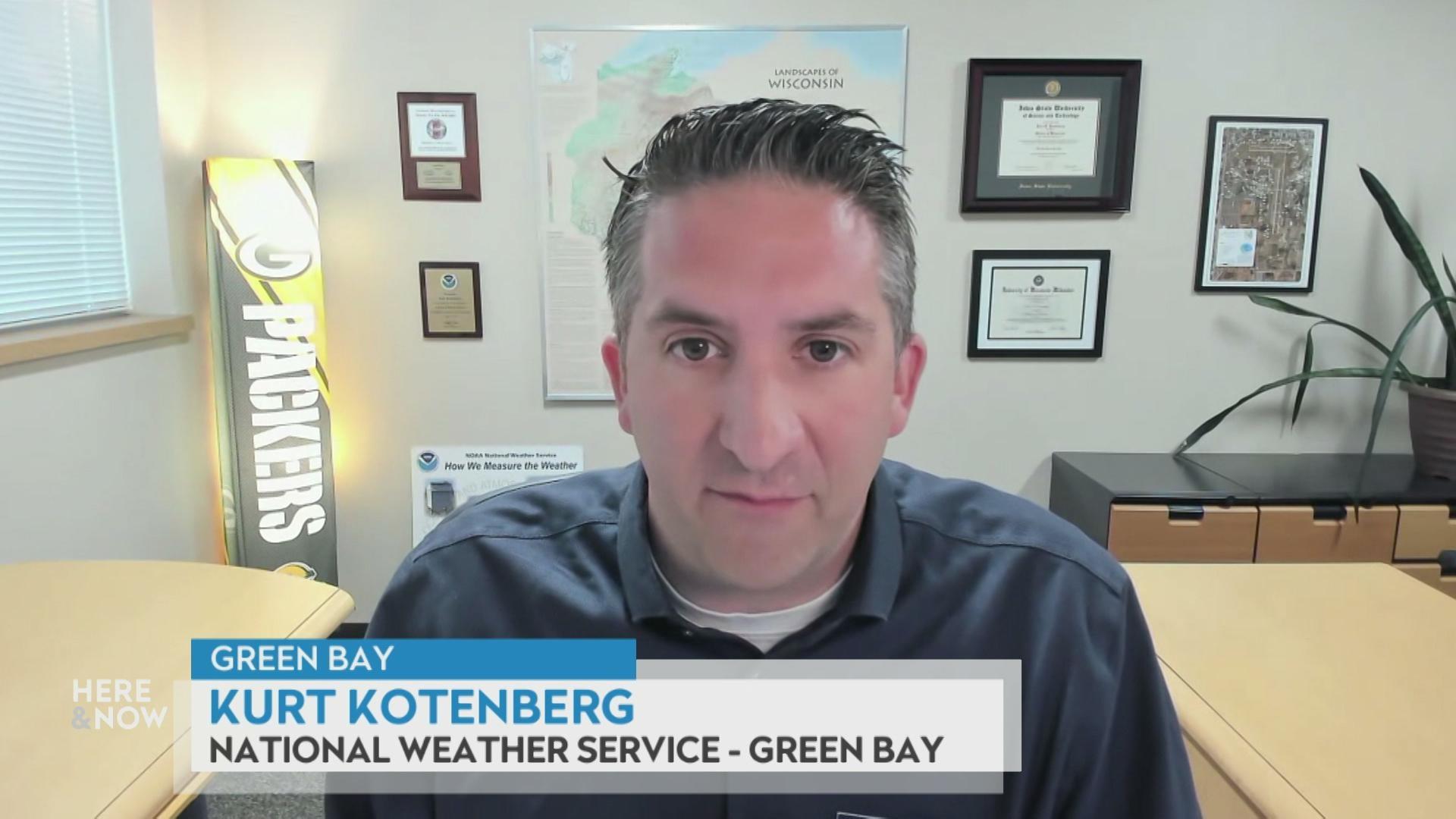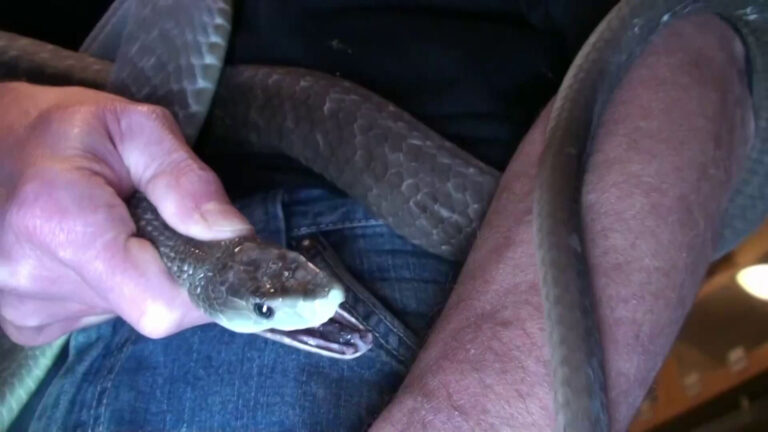Scientists tag and track invasive carp to slow their Great Lakes push
Wildlife agencies have worked to capture invasive carp in Lake Erie and the Illinois and Mississippi rivers, implanting them with transmitters and following their movements to aid in their removal.
Associated Press
November 20, 2023 • Southwest Region
Minnesota Department of Natural Resources Invasive Carp Field Lead Kayla Stampfle inspects the components of a telemetry receiver that tracks tagged invasive carp in the Mississippi River near La Crosse on Nov. 6, 2023. The solar-powered receiver can transmit real-time notifications of the movements of tagged invasive carp. (Credit: AP Photo / Todd Richmond)

LA CROSSE, Wis. (AP) — Wildlife officials across the Great Lakes are looking for spies to take on an almost impossible mission: stop the spread of invasive carp.
Over the last five years, agencies such as the U.S. Fish and Wildlife Service and Minnesota Department of Natural Resources have employed a new seek-and-destroy strategy that uses turncoat carp to lead them to the fish’s hotspot hideouts.
Agency workers turn carp into double agents by capturing them, implanting transmitters and tossing them back. Floating receivers send real-time notifications when a tagged carp swims past. Carp often clump in schools in the spring and fall. Armed with the traitor carp’s location, agency workers and commercial anglers can head to that spot, drop their nets and remove multiple fish from the ecosystem.
Kayla Stampfle, invasive carp field lead for the Minnesota DNR, said the goal is to monitor when carp start moving in the spring and use the tagged fish to ambush their brethren.
“We use these fish as a traitor fish and set the nets around this fish,” she said.
Four different species are considered invasive carp: bighead, black, grass and silver. They were imported to the U.S. in the 1960s and 1970s to help rid southern aquaculture farms of algae, weeds and parasites. But they escaped through flooding and accidental releases, found their way into the Mississippi River and have used it as a super highway to spread north into rivers and streams in the nation’s midsection.
The carp are voracious eaters — adult bigheads and silvers can consume up to 40% of their bodyweight in a day — and easily out-compete native species, wreaking havoc on aquatic ecosystems. There is no hard estimates of invasive carp populations in the U.S. but they are believed to number in the millions.
State and federal agencies have spent a combined $607 million to stop the fish, according to figures The Associated Press compiled in 2020. Spending is expected to hit $1.5 billion over the next decade.
But wildlife and fisheries experts say it would be nearly impossible to eradicate invasive carp in the U.S. Just keeping them out of the Great Lakes and protecting the region’s $7 billion fishing industry would be a success.
Fisheries experts have employed a host of defenses, including electric barriers, walls of bubbles and herding the carp into nets using underwater speakers. But the fish still have made their way up the Mississippi as far as northern Wisconsin and grass carp have been found in Lake Erie, Lake Michigan and Lake Ontario, leaving fisheries managers racing to blunt the incursion.
Agencies such as the U.S. Fish and Wildlife Service and state wildlife managers have built a network of receivers extending from the St. Croix River in far northern Wisconsin to the Gulf of Mexico to record tagged invasive carp’s movement, with periodic data collection. The first receivers were deployed in the Illinois River in an effort to stem migration into Lake Michigan in the early 2000s.
Beginning around 2018, managers started placing new, solar-powered receivers around the Great Lakes region that could track tagged carp and send instant notifications to observers. The real-time notifications reveal where carp may be massing before a migration and illuminate movement patterns, allowing the agencies to plan round-up expeditions to remove carp from the environment and tag more traitor fish.
The receivers are essentially a raft supporting three solar panels and a locked box with a modem and a computer that records contacts with tagged carp. The receivers can pick up signals from tagged fish over a mile away, Fritts said.
He estimated each receiver costs about $10,000. The federal Water Resources Reform and Development Act of 2014 authorized a multi-agency offensive against invasive carp in the upper Mississippi River and Ohio River basins, allowing the USFWS to spend on the devices through its existing budget.
Agencies have deployed the devices in Lake Erie, a stretch of the Mississippi between the Illinois and Missouri borders, the Illinois River and Chicago-area riverways, Fritts said.
The USFWS has set up four real-time receivers in the Mississippi backwaters extending from Davenport, Iowa, to the Missouri border. The U.S. Geologic Survey has set up more than a dozen devices, including receivers in the Chicago Sanitary and Ship Canal, the Des Plaines and Illinois rivers in Illinois; and the Sandusky River in Ohio.
The Minnesota DNR began deploying real-time receivers in the Mississippi backwaters forming the Minnesota-Wisconsin border around La Crosse three years ago. The agency had four receivers out this year, funded largely through federal grants. Plans call for seven in 2024.
Wildlife agencies are still consolidating data on how many invasive carp that real-time tracking has helped them remove, U.S. Fish and Wildlife fisheries spokesperson Janet Lebson said.
But they say the traitor fish tactic is worthwhile, pointing to results in the Mississippi from the Illinois-Iowa Quad Cities to the Iowa-Missouri border. Real-time tracking there has helped wildlife managers and anglers as much as double the poundage of invasive carp pulled from that area of river annually, said Mark Fritts, a fish biologist and telemetry expert in the USFWS’s La Crosse office.
The strategy has drawn muted criticism from the fisheries industry because managers return tagged invasive carp to the wild where they can breed, said Marc Smith, policy director at the National Wildlife Federation’s Great Lakes Regional Center. But wildlife agencies need every weapon they can get against the carp, he said.
“In theory, it works,” Smith said. “We think the rewards outweigh the risk. We have to throw everything we can at them. I wouldn’t want to take anything off the table.”
Stampfle and fish technician James Stone spent three hours in the Mississippi and Black rivers backwaters around La Crosse on a November day removing the receivers for the winter. She said the work is worth it.
“When are these fish moving? If we can figure that out, it gives us a fighting chance,” Stampfle said as she guided her flat-bottom boat back to the landing. “Can we keep up with them? I don’t think anyone can answer that accurately. It’s still unknown territory. It’s an uphill battle on a very slick slope. You just pray you have a foothold.”
 Passport
Passport











Follow Us